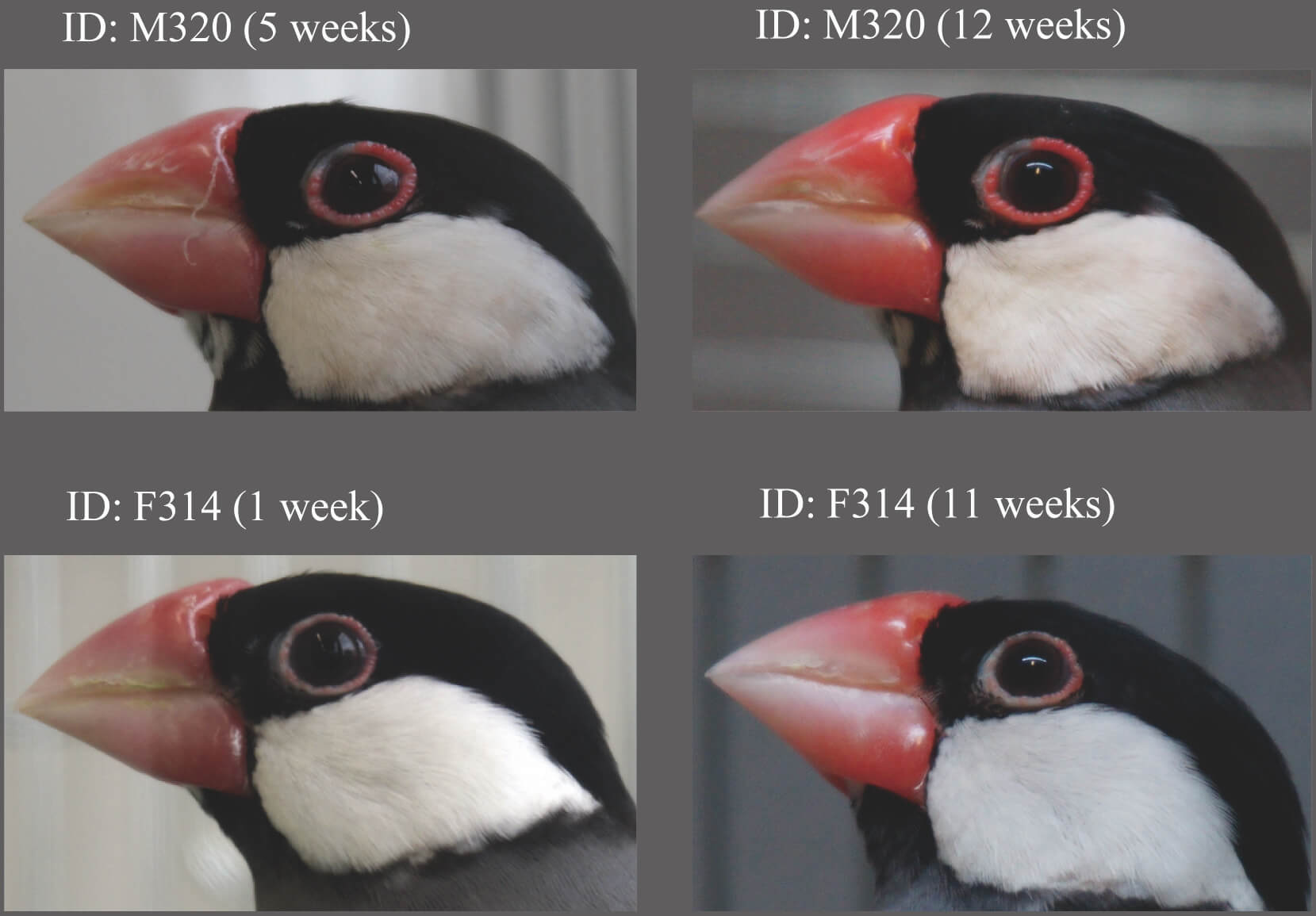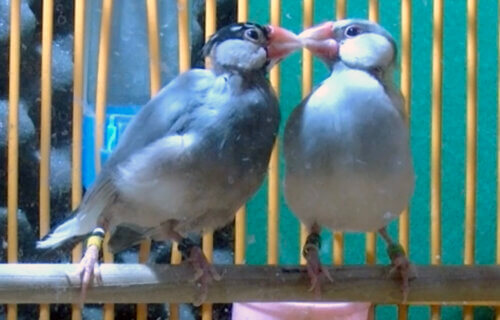SAPPORO, Japan — Do birds experience love at first sight? That’s still a mystery. However, a new study finds it’s pretty easy to spot when a bird is in love with their mate. Researchers have found that the eye rings of tropical birds, specifically Java sparrows, enlarge when they are in love.
Both male and female Java sparrows exhibit this behavior, using the enlarged eye rings to signal their readiness to breed, according to scientists in Japan. These findings, published in the journal PLoS ONE, highlight the significant role of eye ring changes in the communication between courting couples, alongside duet dancing, and vocal and non-vocal sounds.
Birds of various species are renowned for their intricate courtship rituals, which often include singing, dancing, preening, and the display of vibrant plumage. While these colorful external changes during the courtship period have garnered extensive attention, the role of facial features has not been as thoroughly investigated.
Professor Masayo Soma and a research team at Hokkaido University observed increased swelling in the eye rings of Java sparrows, which consist of blushed bare skin around the pupils when these birds formed bonds with their chosen mates. This change, noted in both females and males, serves as a “signal” of their readiness to mate.

“Breeding-related blushing in primates is well studied, as they show conspicuous changes. For example, in rhesus macaque, males with redder faces appear more attractive to females. Other primates, like mandrills, use it to assert dominance. Birds also display colorful bare areas, like beaks and legs, but blood-flow based blush coloring in birds has gone largely unnoticed,” Soma explains in a university release.
“In Java sparrows (Lonchura oryzivora), both sexes have bright pink bare skin around their eyes that swell when the birds are in breeding condition. We predicted that changes in eye rings would reflect physiological conditions and signal fertility, especially among mating pairs,” the researcher continues.
Soma notes that Java sparrows are known for their social monogamy, engaging in mutual courtship and maintaining pair bonds for extended periods. The study spanned 12 weeks and involved 44 adult sparrows from a laboratory population.
“We compared individual changes in the eye ring size between birds paired with preferred mates, those paired with non-preferred opposite-sex individuals, and single birds,” Soma says.
The researchers recorded a “significant” increase in the eye ring size of both sexes among pair-bonded partners throughout the experiment, a change that was not observed in single birds or those paired with non-preferred partners. They clarified that since bare skin can change more dynamically than plumage — which requires molting time — swollen eye rings provide a rapid indicator of mating readiness.
“Java sparrows are native to the tropics and breed most of the year. Morphological changes signaling fertility are important for ensuring reproductive synchrony—especially in the tropics, where seasonal cues are absent,” Soma concludes.
You might also be interested in:
- After pandemic, birds are surprisingly becoming less fearful of humans
- 62% of owners agree they share a ‘mutal love language’ with their pets
- Where do you feel love? Study reveals the emotion is all in your head
South West News Service writer Stephen Beech contributed to this report.

